Chalk Pastel Projects · Art Projects for Kids
Chalk Pastel Projects
Learn how to use chalk pastels in a couple of fun art projects. Ringlet down to see more.Save
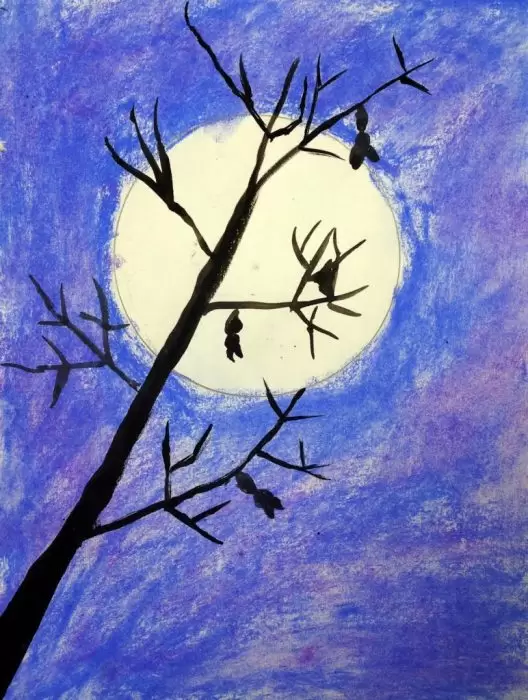
MATERIALS LIST
- Multimedia newspaper
- Old CD for tracing
- Chalk pastels (blue and majestic recommended)
- Tempera cake pigment, blackness
- Paint brush, water
Fourth dimension needed:1 hour.
Paint A Spooky TREE
- Trace a CD nigh the top of a 9″ x 12″ sheet of paper with a pencil.
It will be your full moon.
- Color the background of the moon with blueish and purple chalk pastel.
Blend by shading and blending with your fingers. Have care to not make as well much chalk dust so the moon stays clean and white.
- Soften the black tempera cake with a generous amount of water, or until the pigment is very blackness.
Start painting the tree with the brush. (Younger students can only pigment a straight tree, and older ones can play with the perspective and make it angled.)
- Add thickness to your tree trunk and branches so information technology looks onetime.
Paint any other details of the tree that you might think of.
Giant Chalk Pastel Drawings
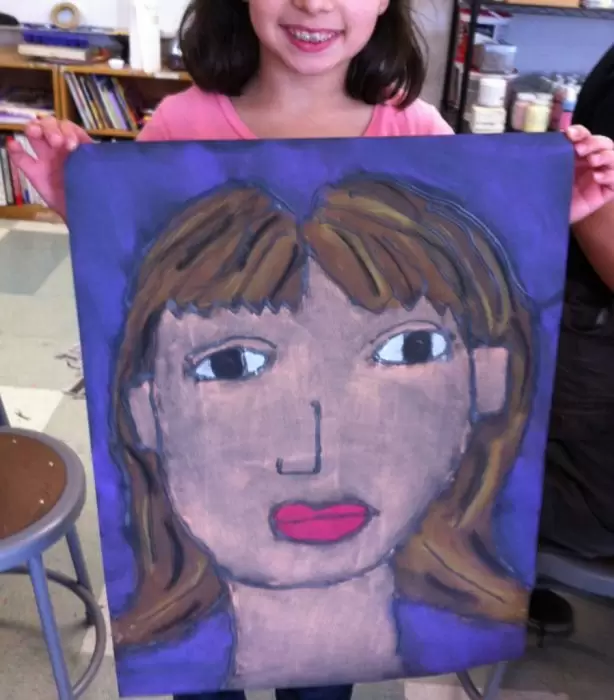
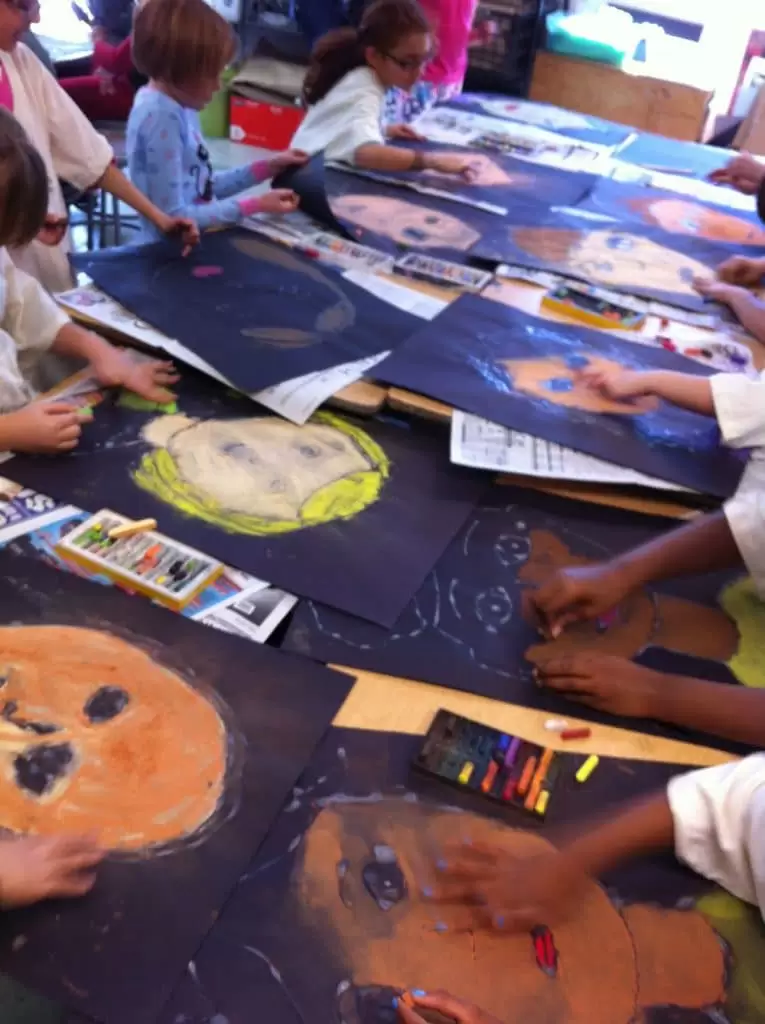
The large newspaper lets students depict with more control, so much more than if they had been working on a 9″x 12″ paper. This form had no puddles or unrecognizable glue shapes anywhere.
Are you trying to envision how to stack 35 giant gum drawings in a drawing rack? My answer is only to not even attempt. Most racks are always a footling slanted, so even if you could go a cartoon in in that location, the mucilage would run to i side and pretty much ruin the art.
No, the solution is to salve this for the finish of the twenty-four hour period, and just use your flat desks every bit drying racks. Students can brand their large pencil sketches anytime, merely save the glue step as the final issue of the solar day, and exit the art to dry overnight.
MATERIALS
- Black structure paper, 18″ x 24″
- White glue
- Chalk pastels
DIRECTIONS
- Demonstrate how to describe a face that fills up an 18″ x 24″ newspaper. An oval that was just inches in from all sides is first, and so the facial proportions. Eyes are drawn in the centre, the bottom of the nose halfway down, and the mouth centered in the space remaining.
- Students trace all their pencil lines with white glue, and allow their portraits dry flat overnight. (Tip: this was done in their homerooms at the end of the solar day.)
- Using chalk pastels, color in all the dissimilar areas and blend them with their fingers. One interesting outcome of watching students terminate was that the scale of the project seemed to appoint them more than usual. Maybe more than projects would do good from just being apparently Big?
Draw Apples with Dimension

Chalk pastels can create some amazing colour, but they are the hardest thing to try to control. My recommendation is to attempt to control them every bit little as possible.
I've tried them in dozens of projects, and go on coming back to the fact that they practise best with super simple, super large, very uncomplicated shapes. These apples worked out gloriously well, if you inquire me, and making them on brightly colored menu stock boosted the color and was more than forgiving of smudges.
MATERIALS
• Colored paper, I used Recollections cardstock in Navy and Imperial*
• Black oil pastel
• Chalk pastels
DIRECTIONS
one. Describe an apple that FILLS one sheet of paper.
2. Trace information technology with a black oil pastel.
three. Trace it again to brand a very thick line. This will help go along the chalk dust from spreading to the background, or at least minimize it.
4. Accept a white chalk pastel and color in a oval or squarish shape about the tiptop left corner to make a highlight. Blend it in so it is polish and has fuzzy edges.
five. Cull your main apple color and gently fill the apple, coloring around the white highlight. Alloy the highlight edges and so they are soft and fuzzy and blend into the main colour.
6. Gently rub some brownish chalk pastel on the correct side of the apple tree. Smoothen with your fingers to blend in the color.
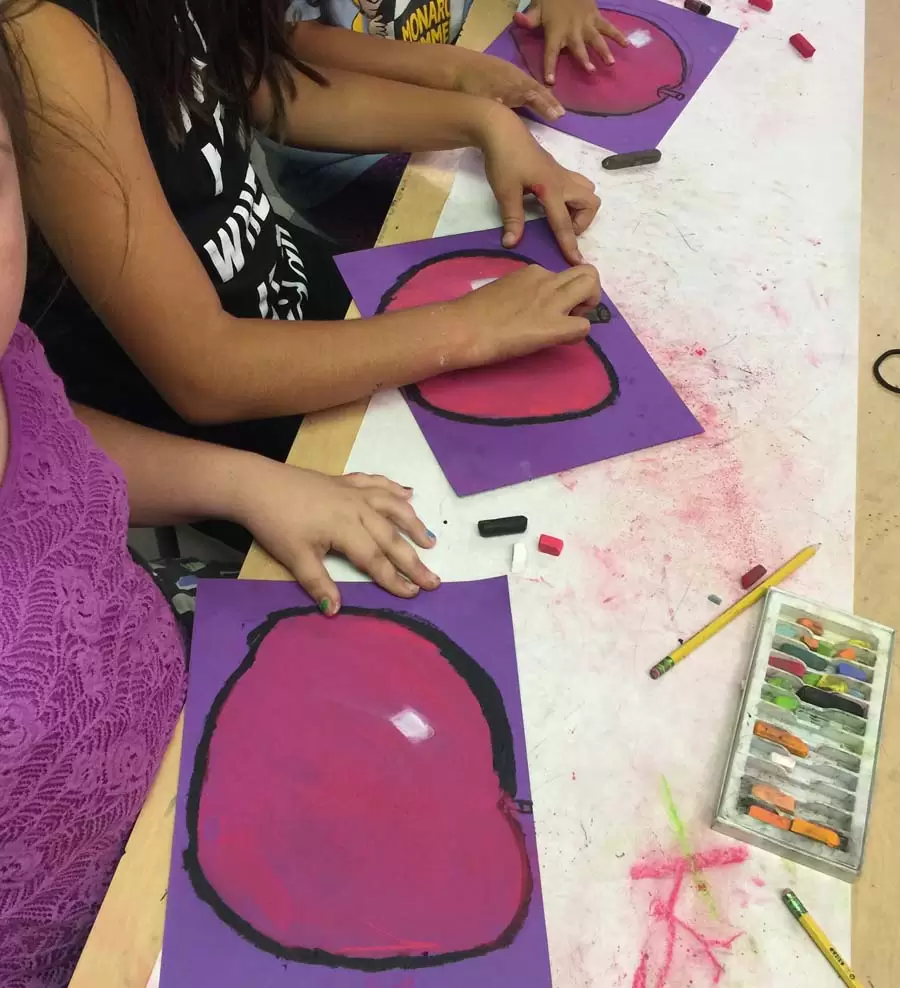

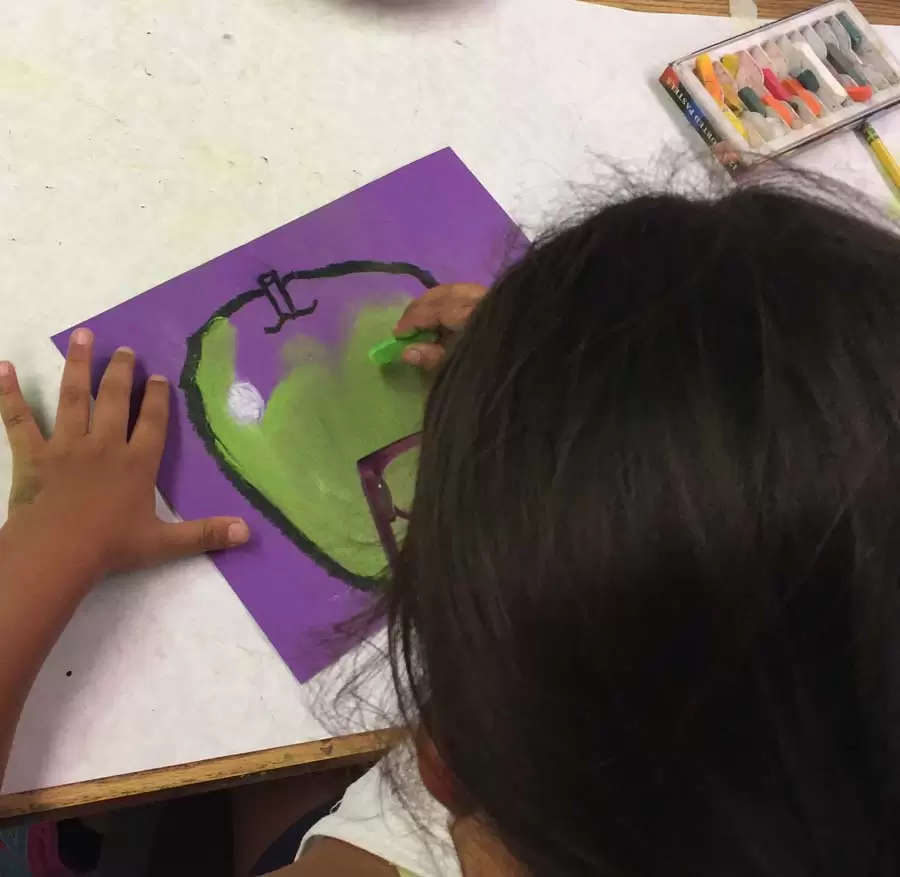
bertscholawkway1985.blogspot.com
Source: https://artprojectsforkids.org/pastel-paint-tree/
0 Response to "Chalk Pastel Projects · Art Projects for Kids"
Enregistrer un commentaire